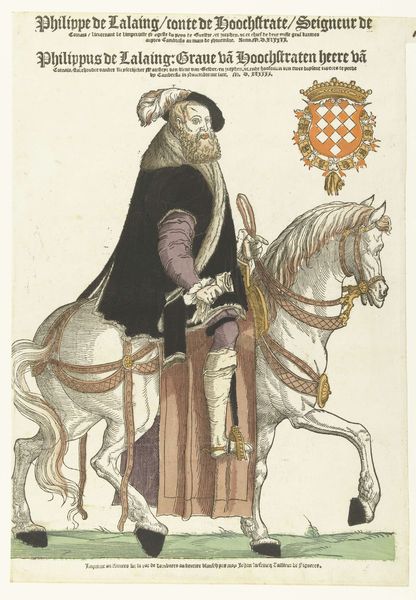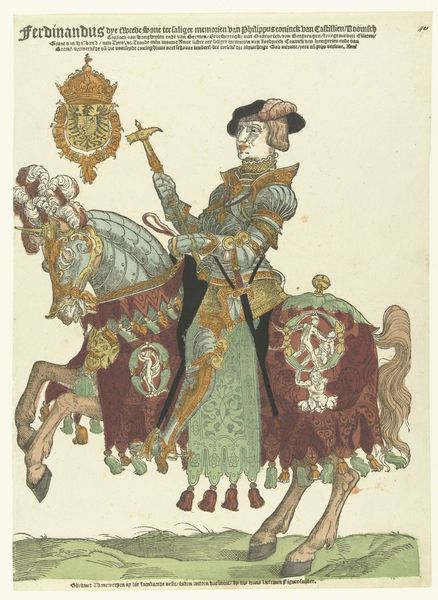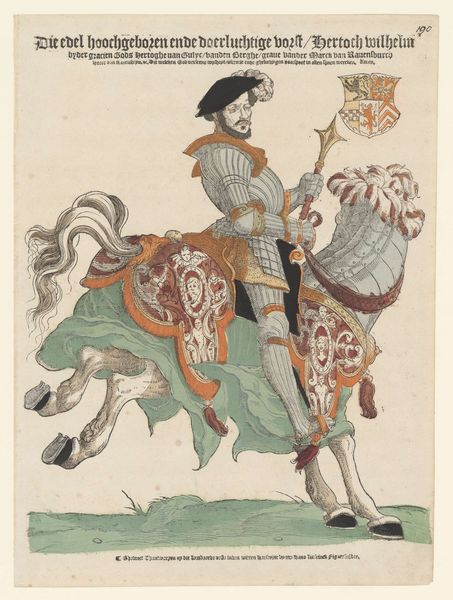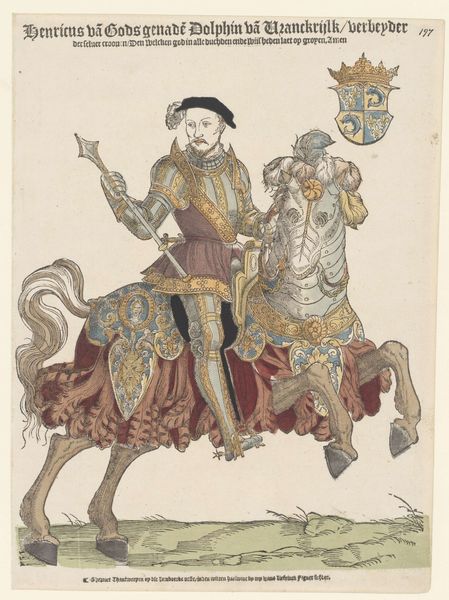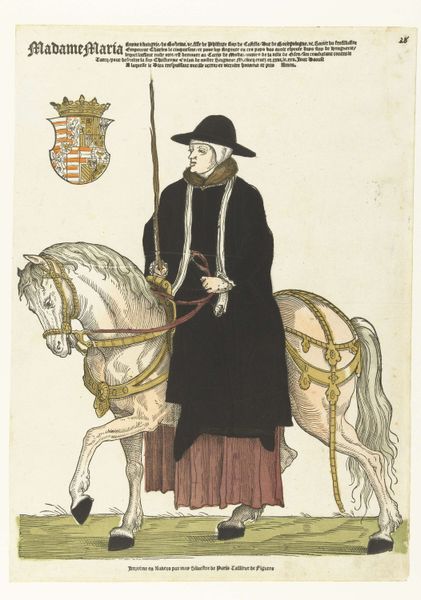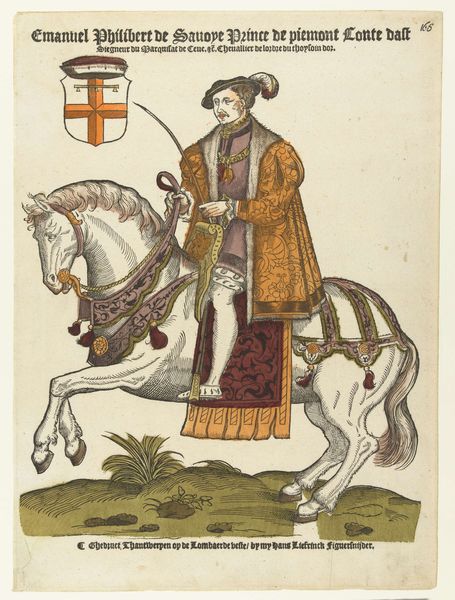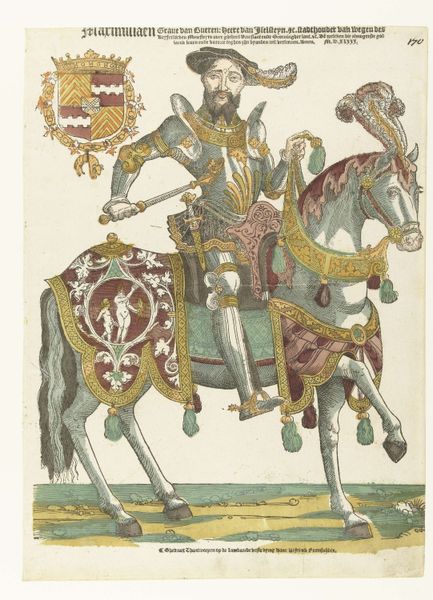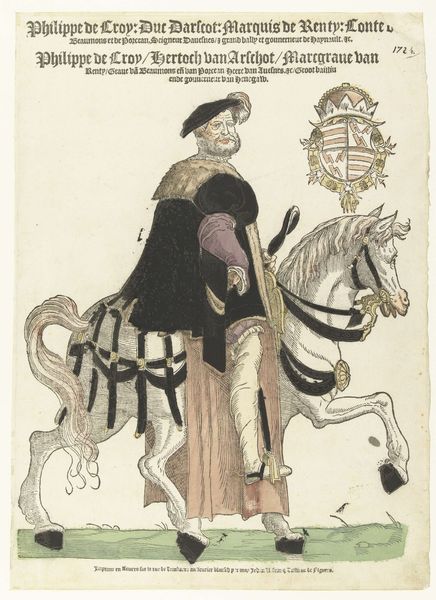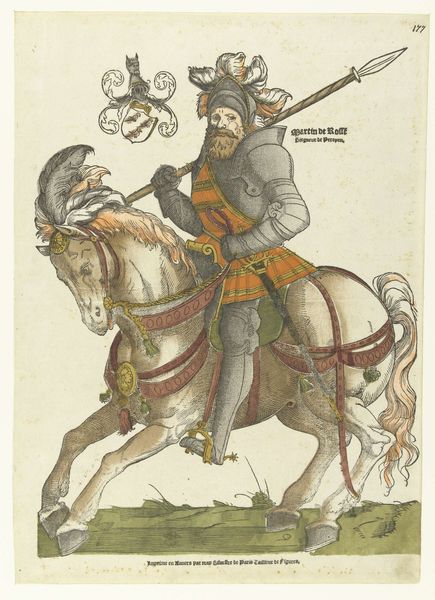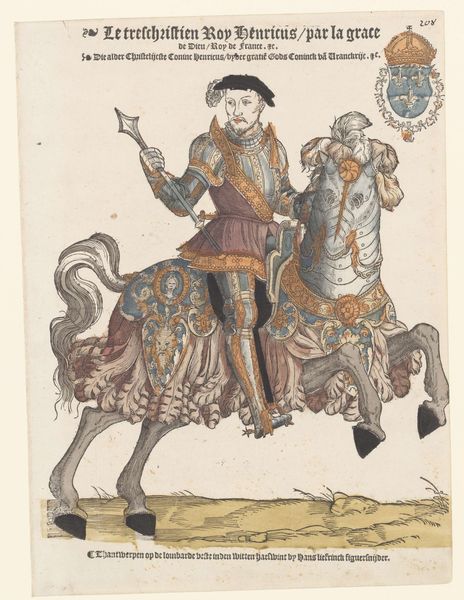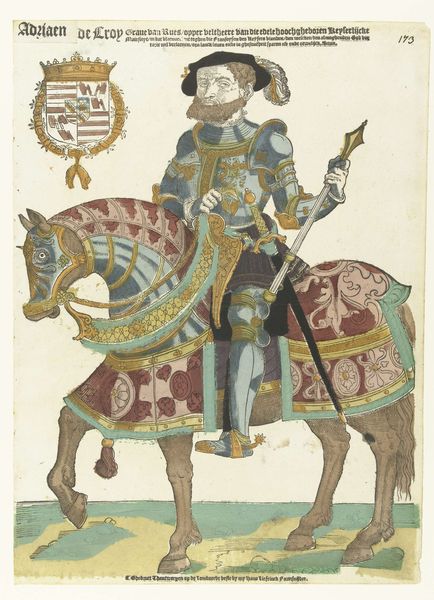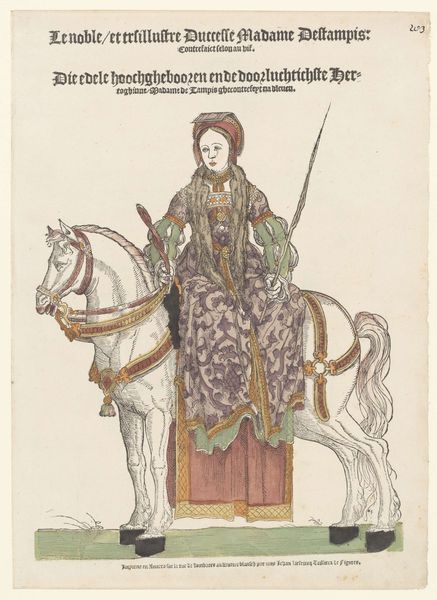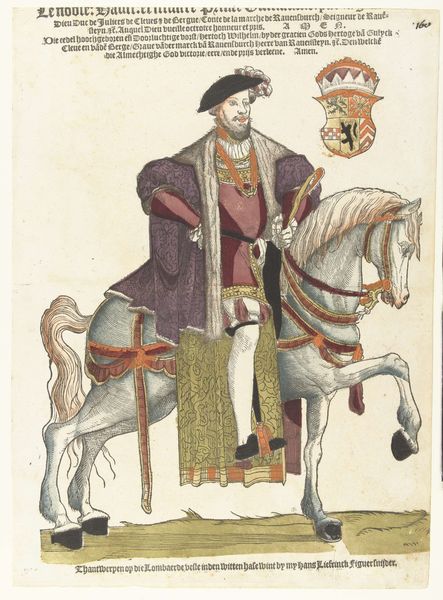
print, oil-paint, engraving
#
portrait
# print
#
oil-paint
#
11_renaissance
#
history-painting
#
northern-renaissance
#
engraving
Dimensions: height 405 mm, width 298 mm
Copyright: Rijks Museum: Open Domain
Editor: This is “Portrait of Maximiliaan van Buren on Horseback,” created around 1543 by Cornelis Anthonisz. in oil paint. There is something both grand and slightly stiff about the figure – I’m curious what stands out to you? Curator: For me, it's a carefully constructed performance of power. Look at the horse – not dynamically rearing, but posed, almost like a prop. This resonates with the very notion of 'equestrian portraiture'. Editor: Performance in what way? Curator: Maximiliaan, via Anthonisz's skillful hand, is deliberately constructing an image intended to evoke classical Roman emperors. He is connecting himself to a lineage of rulers. Note, even the colours used and their distribution, don't they speak of status? Editor: You’re right! The way his garments hang are almost sculptural. What about the coat of arms then? How should we read this? Curator: The coat of arms cements the message. It publicly declares Van Buren’s lineage, his rights, and by implication, his legitimacy to wield authority. The inclusion also prompts reflection: who exactly was this portrait meant for? Did it adorn a town square? Was it propaganda, or something personal? Editor: That's fascinating, it's like peeling back the layers of an onion. Thank you for opening my eyes to how symbolic these images could be! Curator: Indeed, visual symbols are the persistent carriers of cultural memory. A constant rediscovery is part of the joy.
Comments
No comments
Be the first to comment and join the conversation on the ultimate creative platform.
